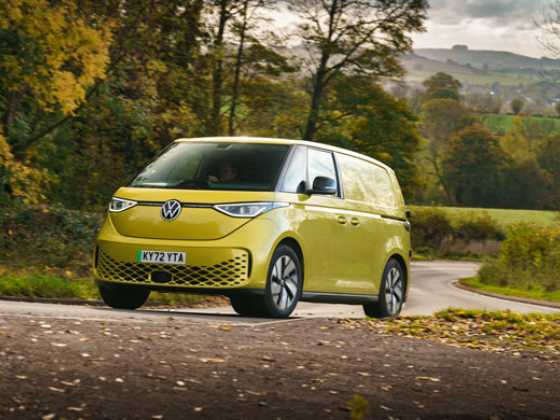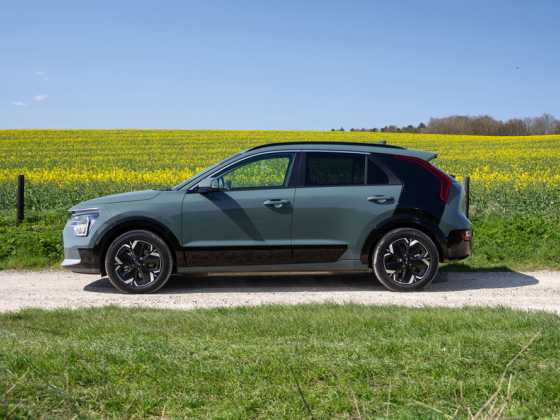Diesel hybrid enters the Lion's Den
Well-upholstered road tester Roland Rendell gives Peugeot’s new diesel hybrid the GreenFleet treatment and chews over its extras with his old mucker none other than Fifth Gear’s Jonny Smith
 When Peugeot head office decided to tinker with diesel hybrid technology, it promised to be the start of something significant. Let’s look at the figures: 200bhp, 99g/km CO2 output. These are figures you wouldn’t expect to exist in the same sentence, but they do, in the form of a well-finished crossover. The one that arrived at my door was officially called Vapor Grey.
When Peugeot head office decided to tinker with diesel hybrid technology, it promised to be the start of something significant. Let’s look at the figures: 200bhp, 99g/km CO2 output. These are figures you wouldn’t expect to exist in the same sentence, but they do, in the form of a well-finished crossover. The one that arrived at my door was officially called Vapor Grey.
The 3008 Hybrid4 looks the part on the outside, and it doesn’t let you down internally either – it’s spacious, with a very well-styled centre console and dash. The gearstick is raised, and sits in front of the climate control centre. Above that is the main bank of ‘twiddlies’ that control the sat-nav, stereo and information system on-board. To the right, through the steering wheel, are your dials.
Finally, back at the base of the console is the main dial that allows you to specify your driving mode, and there are four to choose from – ZEV, Auto, Sport or 4WD modes. ZEV (Zero Emissions Vehicle) mode lets you drive on the electric motor alone, and you can travel at up to 31mph for maybe two miles provided there is enough battery charge. When I start the car up, the sat‑nav raises from the top of the dashboard like something out of Thunderbirds. Add to that the head-up display above the dials, which gives you your speed, and you really do feel like you’re in something from a movie. I select Auto on the ‘robotised manual’ six‑speed gearbox, which uses standard manual internals but can shift automatically.
Paddle shifters
Gear shift comes via familiar paddle‑shifters on the steering wheel or by the central selector lever. In Auto mode, the 3008 HYbrid4 does what it thinks is best for the circumstances, which will often include moving off silently from a standstill, with the engine cutting in smoothly once you are under way.
The diesel and electric motors can work independently or together, to assist acceleration or provide a limited four‑wheel drive mode. It uses a diesel engine to drive the front wheels and an electric motor to propel the rear wheels.
A diesel engine is about 30 per cent more economical than petrol, mainly because you need less fuel to generate the same amount of energy. Therefore, a diesel hybrid should be more frugal than a petrol hybrid, but until now, no-one has mass-produced one because of the cost – a diesel engine being more expensive to make than a petrol equivalent.
No slouch
So what we now have here is a 2.0-litre diesel engine delivering 163bhp and 300Nm of pulling power, and the electric motor a maximum of 37bhp and 200Nm, this car can accelerate from 0-62mph in 9.1 seconds. Its top speed is 118mph, and as a result, buyers won’t be frustrated by the lack of pace, particularly when trying to overtake at motorway speeds. And if you don’t push it, the fuel economy and mpg can be there as well.
Around corners the 3008 is composed, with easy, controlled steering. The stiff suspension means there’s little body roll, but this does bring about issues with ride quality. Because the interior and seats are spacious, you can find yourself rolling around a bit, especially if you’re out in the country, driving through twisty lanes. On a long stretch though, this car does come alive.
Trip to Rockingham
I had the pleasure of visiting the home of the GreenFleet Arrive’n’Drive – Rockingham. This meant 80-odd miles on the M11 and A14, the perfect journey to see if the claimed 74mpg is achievable. As a stickler for following the letter of the law, and not breaking the speed limit, I am unable to tell you if it reaches 118mph at the top end, but the car is certainly no slouch. The cruise control is handy, and I set the limit to 70mph. And now it’s time to start taking notice of the technology on offer.
One option on the 7” screen shows a diagram of the car, and indicates where the power is coming from, or going to. When it’s working at 70mph, it’s all about the diesel engine. But as I approach the back end of two lorries sitting side by side, doing 56mph, I have to ease on the brakes. They’re regenerative and you immediately see the power being redistributed back in to the electric motor. The final screen that interests me is the trip monitor. It gives you instant mpg feedback, in five minute intervals, set out in bar-chart style. And after half an hour or so, I have seen it slowly climb from the low-40s up to somewhere between the 60 and 80 mark. So, as I found with the 208 in Scotland, Peugeot are quite accurate with their figures. In truth, this car seems to float effortlessly along like a butterfly, and before I knew it, I was in Little Scotland (Corby).
While there, I hooked up with my old mate, Jonny Smith, from Fifth Gear. I knew that he was familiar with the technology, as I had seen his review of the DS5, so we sat and chatted over the different aspects of this car. We discussed the extra’s that comes standard on this car, such as stop/start, climate control, tinted windows, rear parking sensors, cruise control, a speed limiter, automatic headlights and wipers, alloy wheels and USB and Bluetooth connectivity. Overall, we’re both quite impressed.
A bit of everything
During my testing, which covered a mix of roads and traffic conditions, I averaged 52mpg. The economy you achieve will be heavily dependent on how and where you drive the car, so do make sure you try it before assuming you’ll achieve the quoted figures. At 99g/km of CO2 this means exemption from the London Congestion Charge, free road tax and inexpensive company car tax. It’s good around town, and great on a long stretch. Where I see a potential market for this model is the emergency services. The 200 horses give you the power, the hybrid technology is good for the neighbourhood patrols. In a nutshell, it’s uncomplicated and it’s got a bit of everything.
The Peugeot 3008 HYbrid 4 is on sale now, with prices starting at £26,995 for the 99g/km model, and when you add up all the other costings, over its life-cycle, I’m beginning to think it could be worth it.









